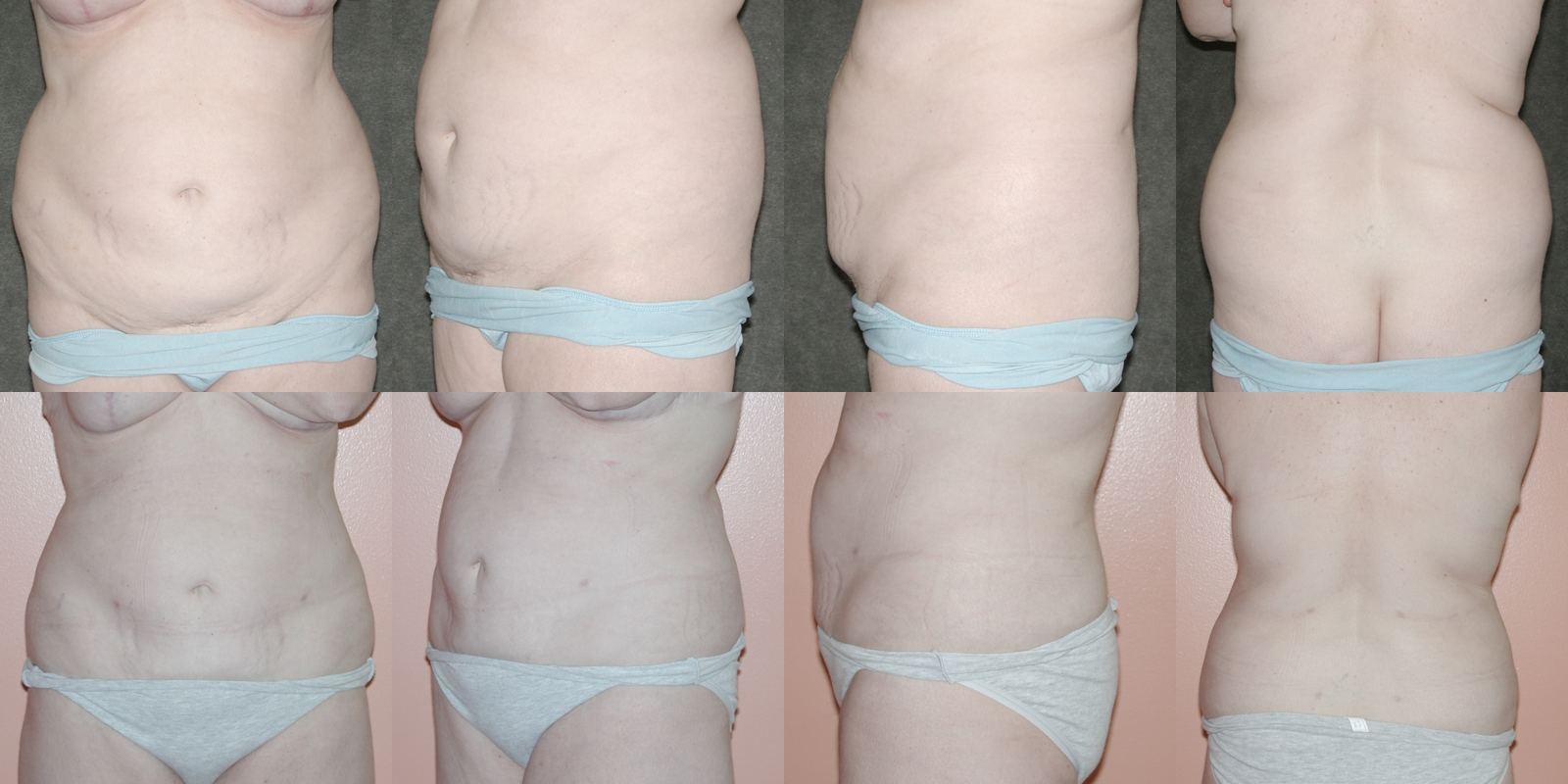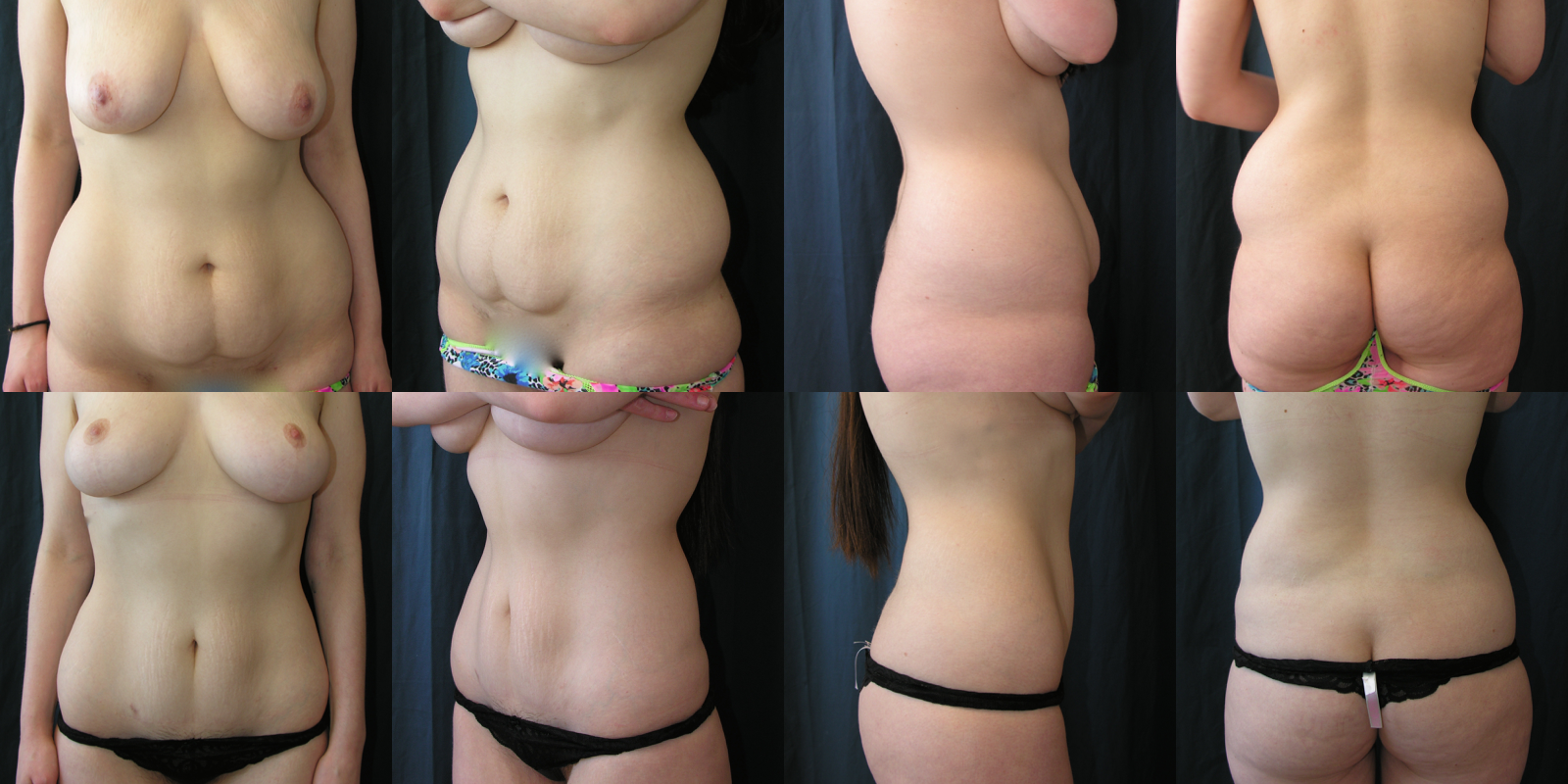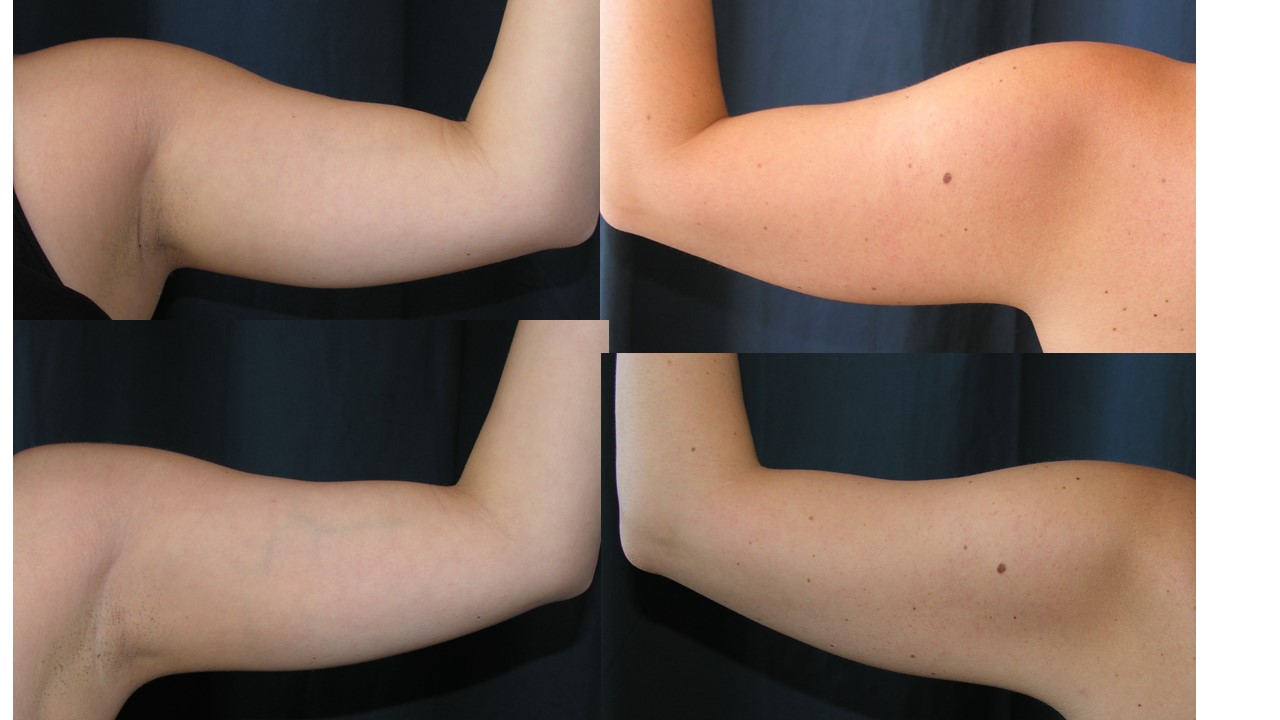Liposuction
Liposuction or SAL (suction assisted lipectomy) refers to removal of fat using a suctioning technique. This is not a weight loss operation, but a body contouring procedure. The perfect candidate for this procedure is a patient who is at his/her goal weight but has residual areas of excess fat that do not improve with diet and exercise. When you have done what you can to reach your goal, Dr. La Via can help with the stubborn areas. Liposuction is mainly done on the trunk (abdomen, flanks, back rolls, hips), upper arms, thighs, inner knees and neck. In some cases this is not the appropriate operation due to excess skin or poor quality skin. Liposuction does not improve the appearance of cellulite.
Unless the area to be addressed is small, liposuction is performed under general anesthesia. Small incisions are made in the least conspicuous areas and fluid consisting of saline mixed with epinephrine (adrenaline) and lidocaine (numbing medication) is first injected. This allows for constriction of blood vessels to minimize bleeding and bruising and helps with pain control. Thin cannulas are then used to suction out the fat. Postoperative compression garments are then worn for 4-6 weeks depending on the amount of contouring. The fat that is removed is sometimes used to augment the breasts and can also be used in facial rejuvenation if the face has lost volume due to aging. (edited)
Despite good health and a reasonable level of fitness, some people may still have a body with disproportionate contours due to localized fat deposits. These areas may be due to family traits rather than a lack of weight control or fitness.
Liposuction slims and reshapes specific areas of the body by removing excess fat deposits, improving your body contours and proportion, and ultimately, enhancing your self-image.
Liposuction techniques may be used to reduce localized fat deposits of the:
- Thighs
- Hips and buttocks
- Abdomen and waist
- Upper arms
- Back
- Inner knee
- Chest area
- Cheeks, chin and neck
- Calves and ankles
In some cases, liposuction is performed alone, in other cases it is used with plastic surgery procedures such as a facelift, breast reduction or a tummy tuck.
What it won’t do: Liposuction is not a treatment for obesity or a substitute for proper diet and exercise. It is also not an effective treatment for cellulite, the dimpled skin that typically appears on the thighs, hips and buttocks, or loose saggy skin.
The decision to have liposuction is extremely personal and you’ll have to decide if the benefits will achieve your goals and if the risks and potential complications are acceptable.
Your plastic surgeon and/or staff will explain in detail the risks associated with surgery. You will be asked to sign consent forms to ensure that you fully understand the procedure you will undergo and any risks or potential complications.
Possible risks of liposuction include:
- Uneven contours
- Rippling or loose skin
- Skin or nerve damage
- Irregular pigmentation
- Infection
- Fat clots
- Blood clots
- Excessive fluid loss or fluid accumulation
- Unfavorable scarring
- Thermal burn or heat injury from ultrasound with the ultrasound-assisted lipoplasty technique
- Anesthesia risks
- Bleeding (hematoma)
- Change in skin sensation
- Skin discoloration or swelling
- Asymmetry
- Pain, which may persist
- Damage to deeper structures such as nerves, blood vessels, muscles, lungs, and abdominal organs
- Poor wound healing
- Persistent swelling in the legs
- Deep vein thrombosis, cardiac and pulmonary complications
- Possibility of revisional surgery
Is it right for me?
If you are bothered by excess fat deposits – located anywhere on your body – that don’t respond to diet or exercise, liposuction may be right for you.
Ideal candidates for liposuction are:
- Adults within 30% of their ideal weight who have firm, elastic skin and good muscle tone
- Healthy individuals who do not have a life-threatening illness or medical conditions that can impair healing
- Non-smokers
- Individuals with a positive outlook and specific goals in mind for body contouring
My Recovery
Once your procedure is completed, a compression garment or elastic bandages may cover treatment areas. These help to control swelling and compress the skin to your new body contours.
In addition, small temporary drains may be placed in existing incisions beneath the skin to remove any excess blood or fluid.
You will be given specific instructions that may include: How to care for the surgical site(s), medications to apply or take orally to aid healing and reduce the potential for infection, specific concerns to look for at the surgical site or in your general health, and when to follow up with Dr. La Via
A special note: Secondary procedures may sometimes be recommended to reduce excess skin. Special considerations are needed when large amounts – usually more than 5 liters of fat – are suctioned.
When you go home
If you experience shortness of breath, chest pains, or unusual heart beats, seek medical attention immediately. Should any of these complications occur, you may require hospitalization and additional treatment.
The practice of medicine and surgery is not an exact science. Although good results are expected, there is no guarantee. In some situations, it may not be possible to achieve optimal results with a single surgical procedure and another surgery may be necessary.



